
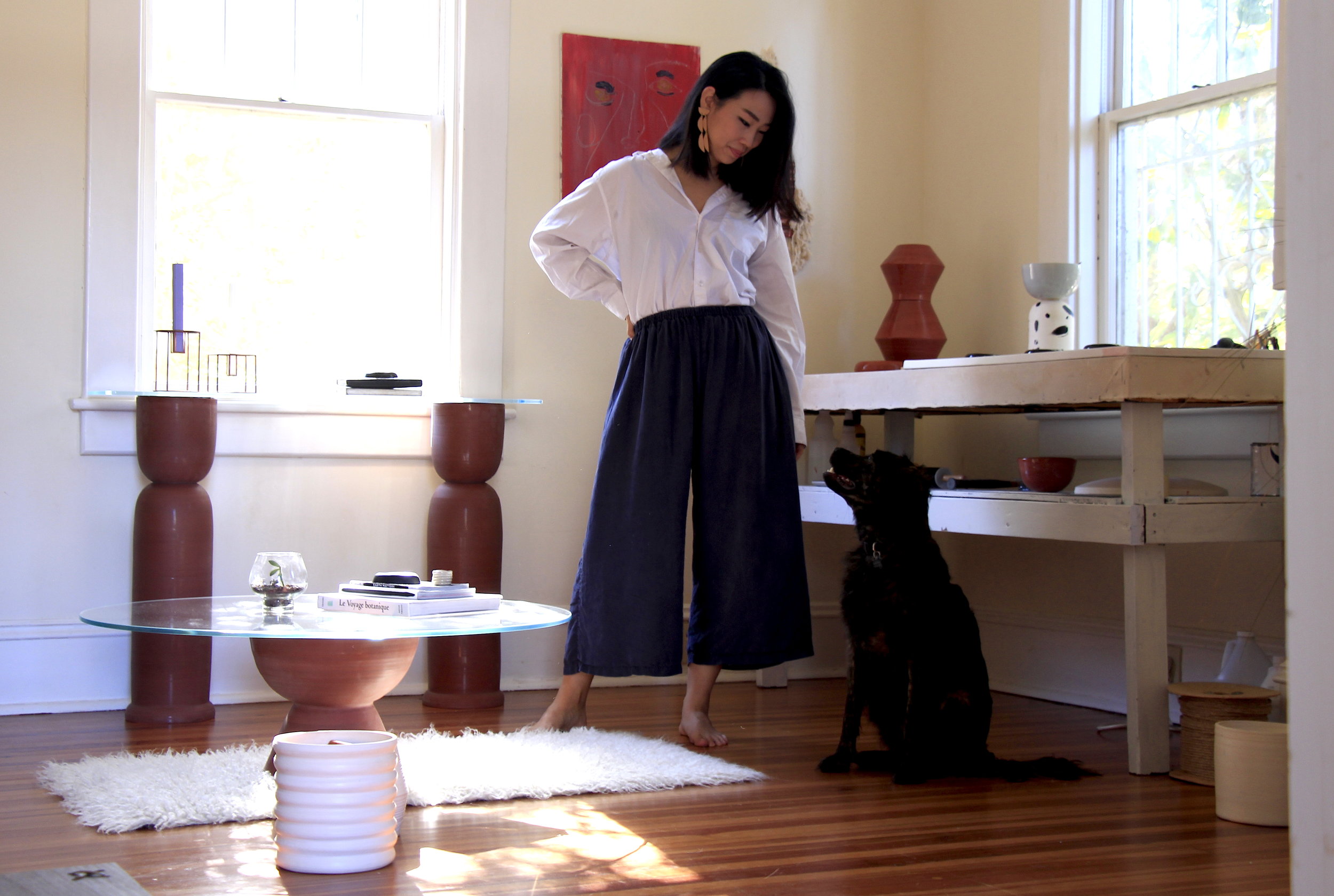
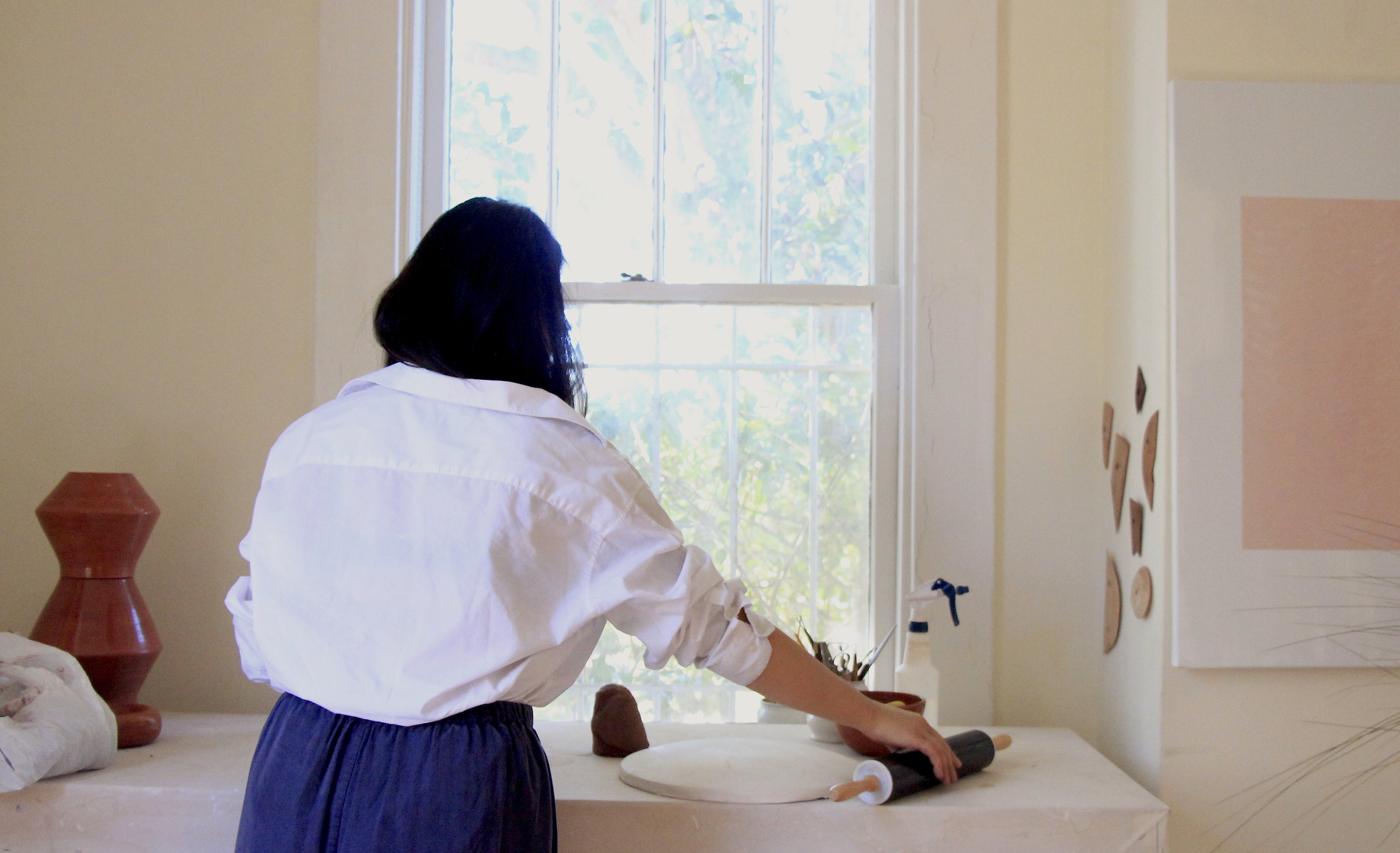
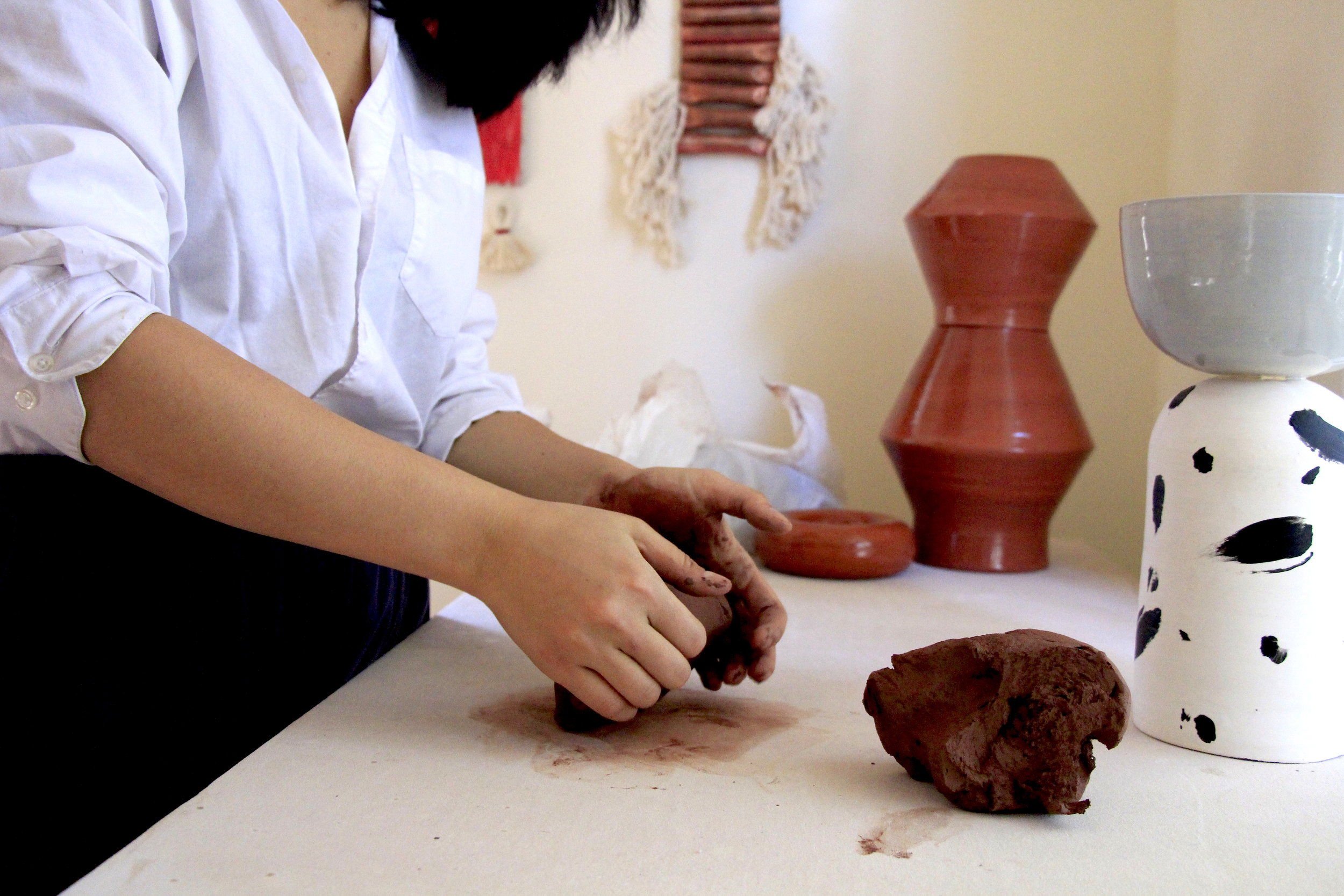
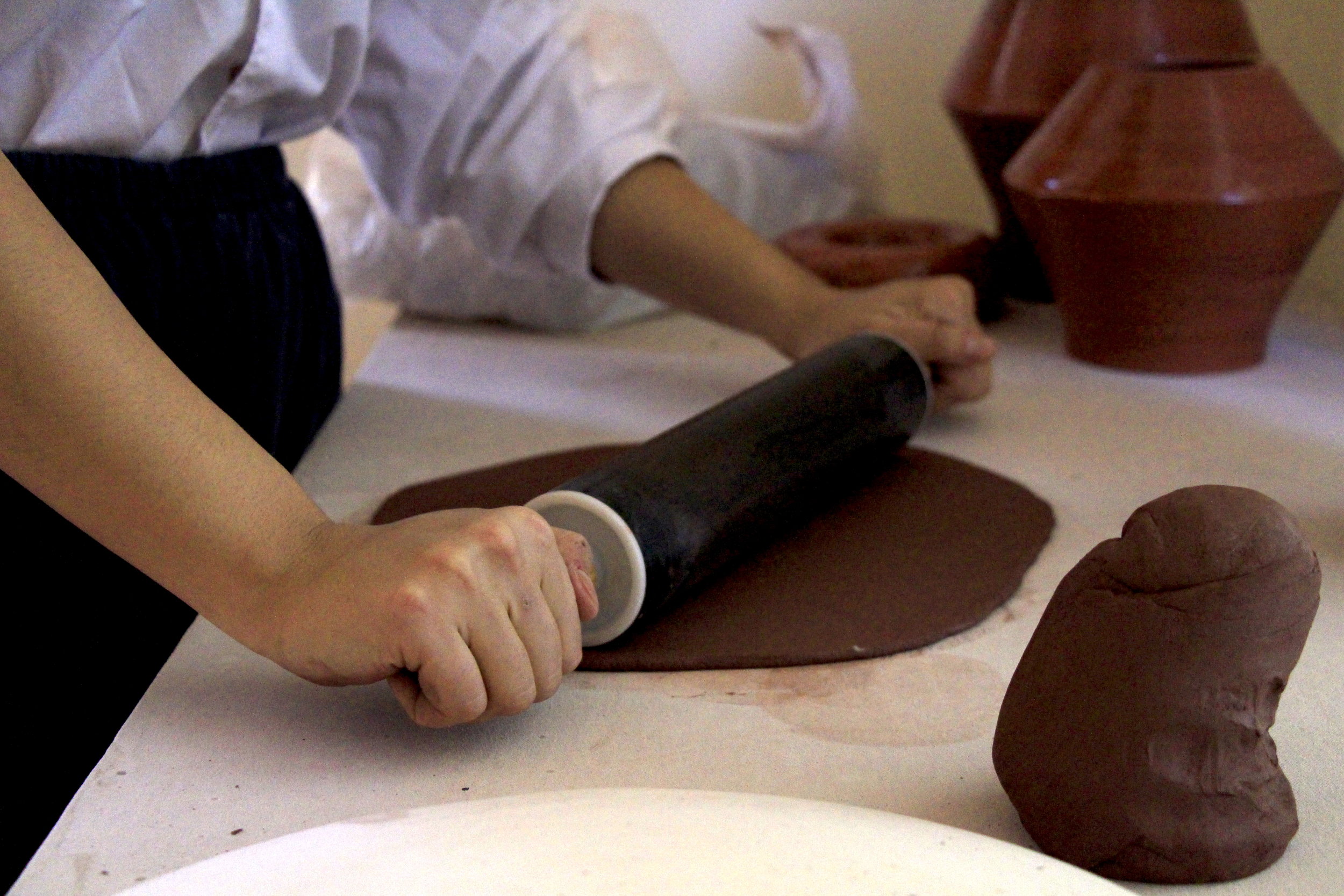
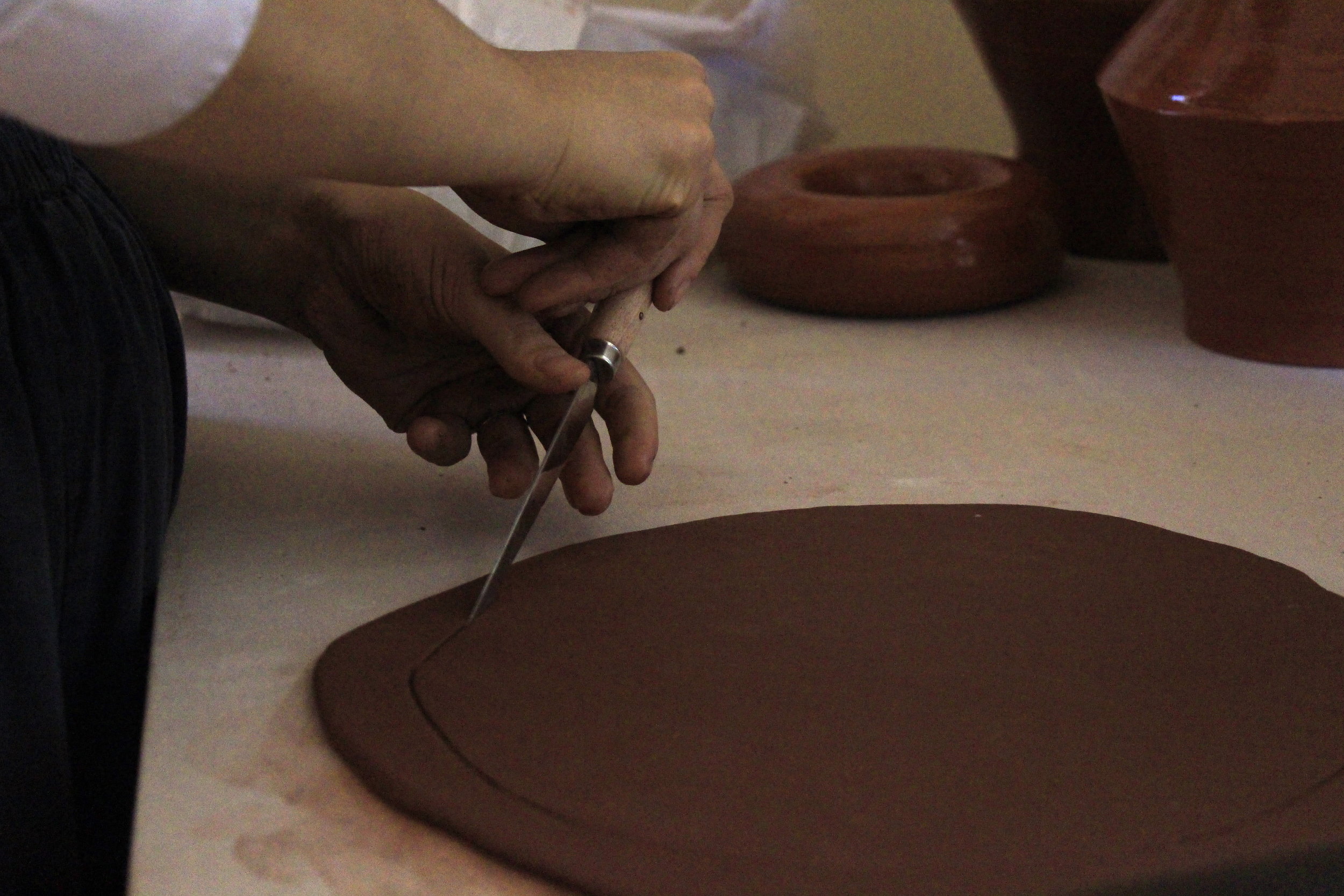
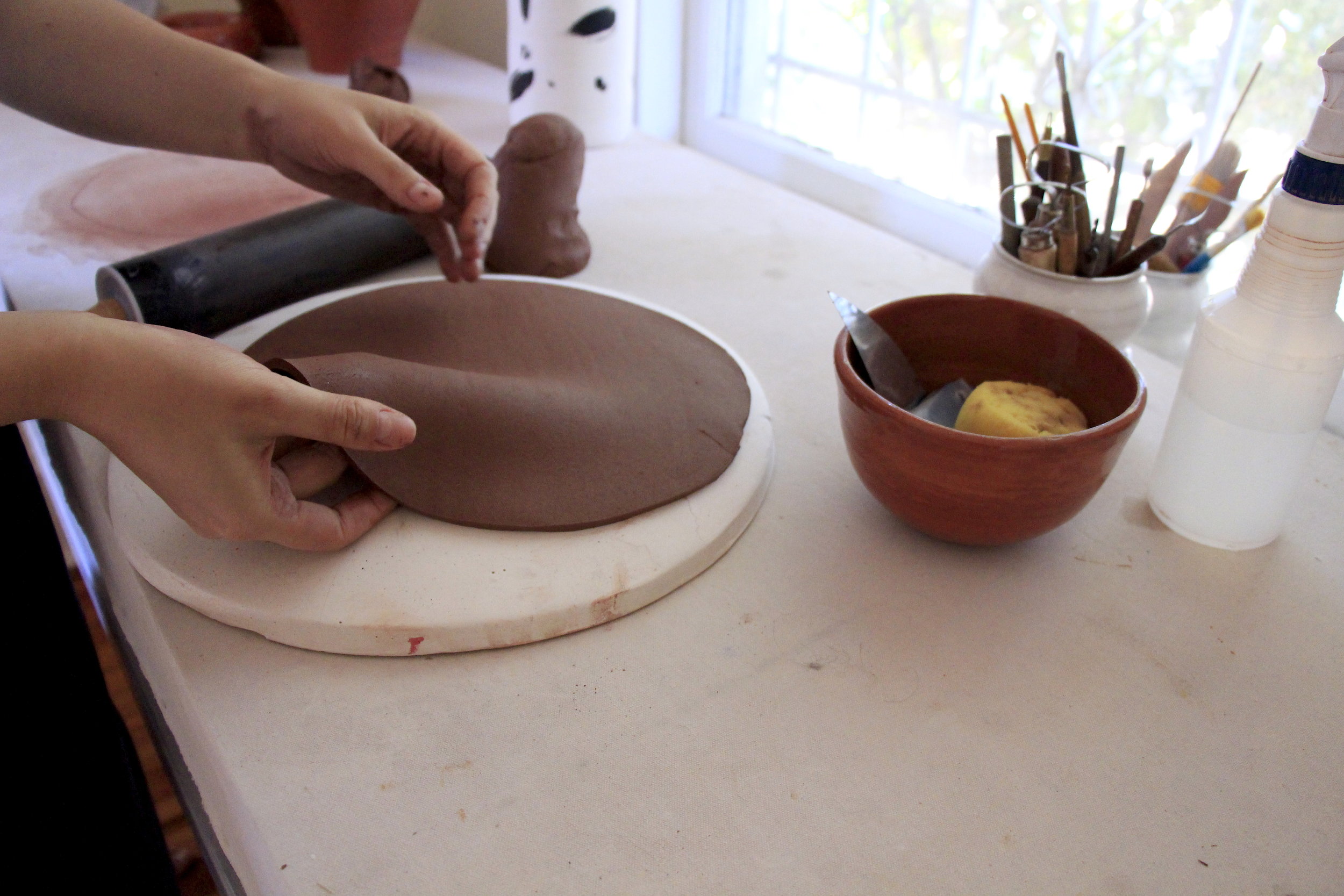
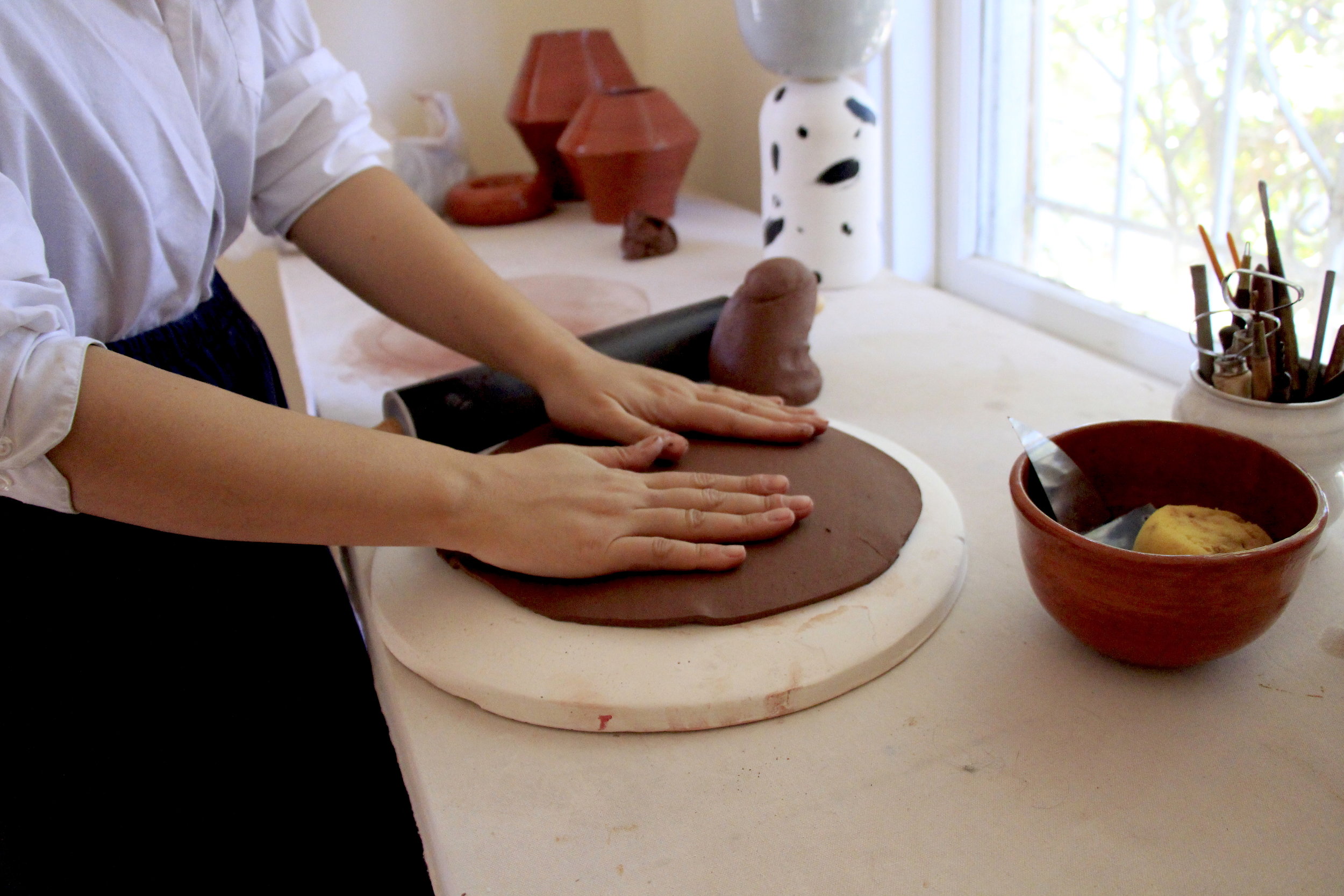
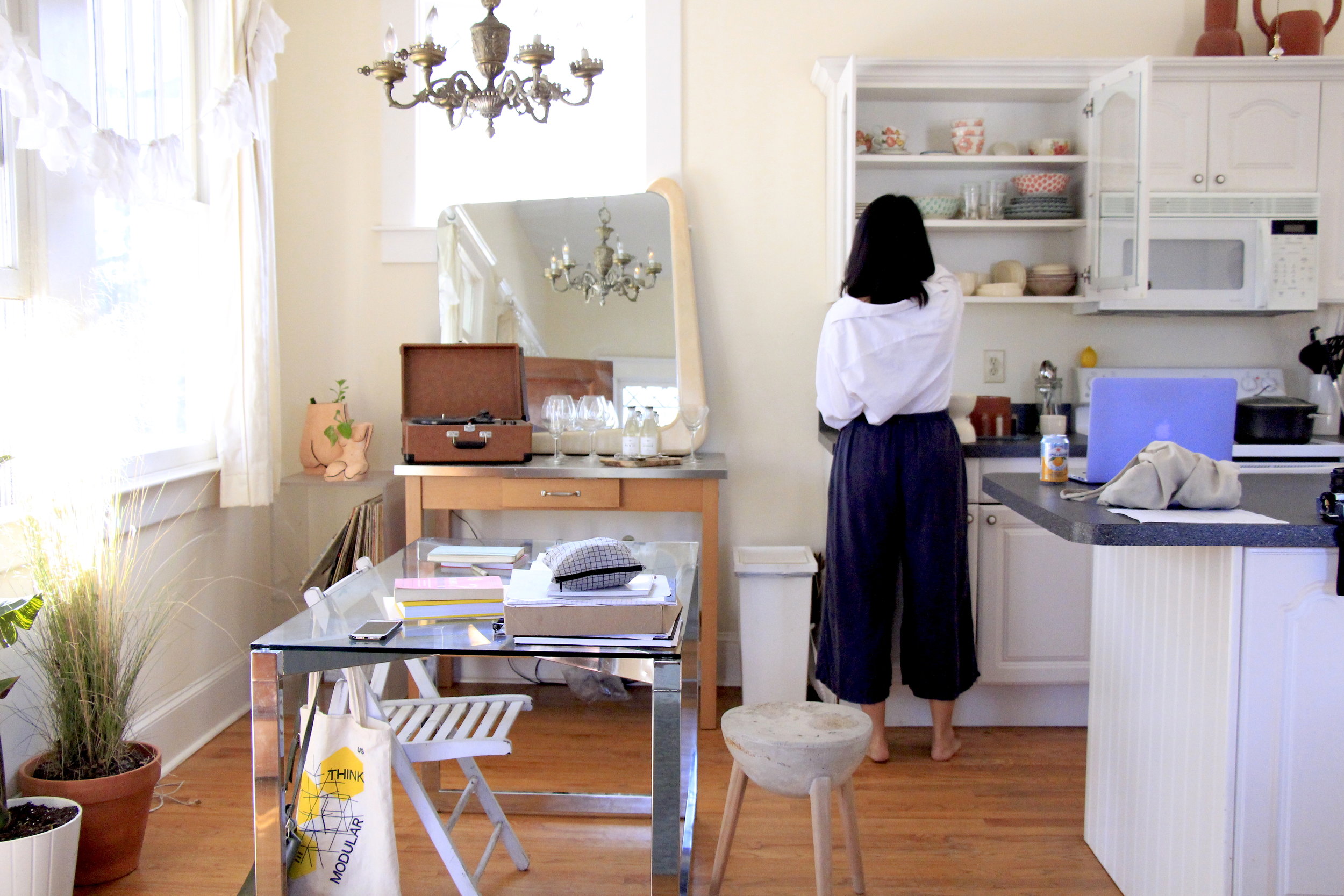
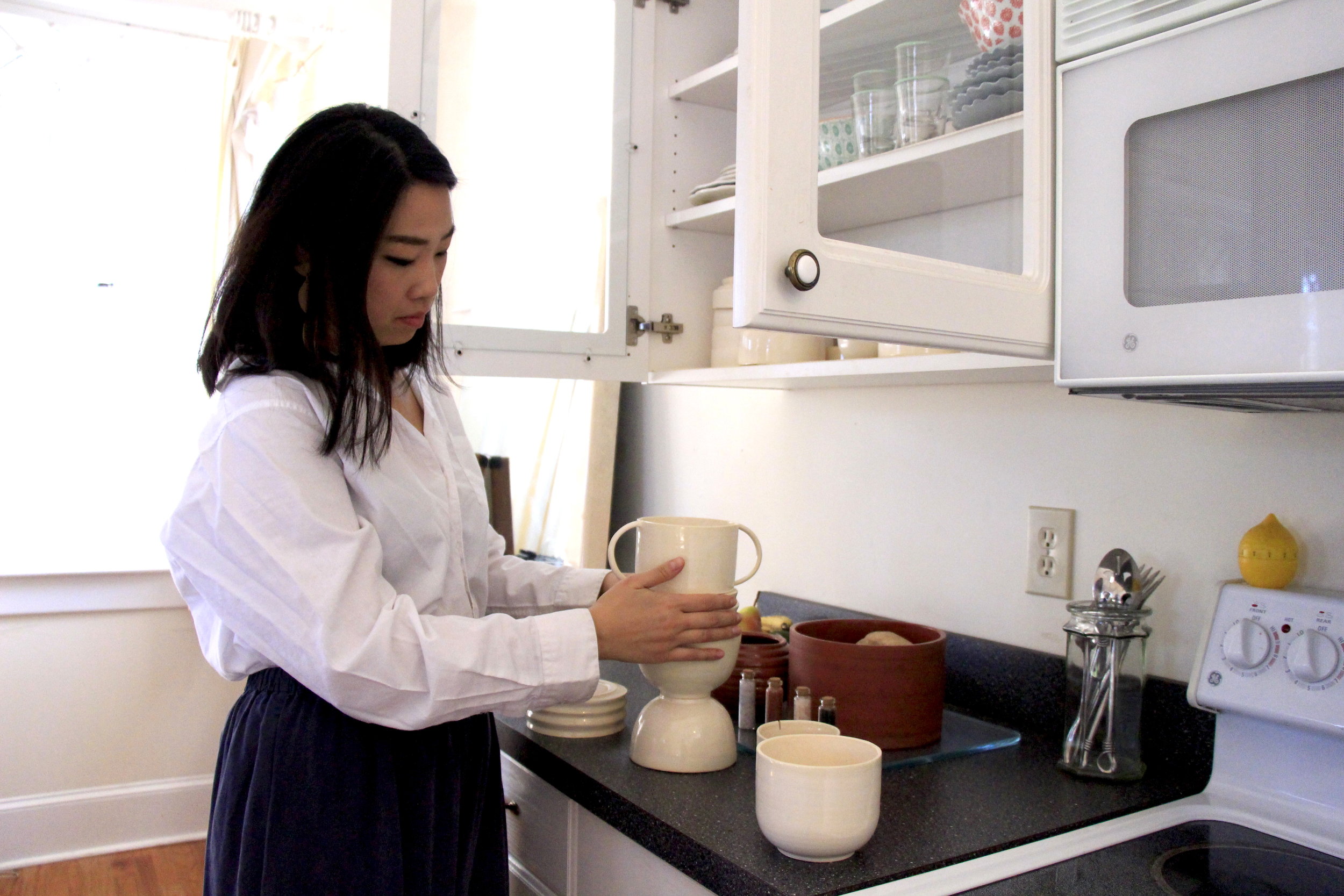
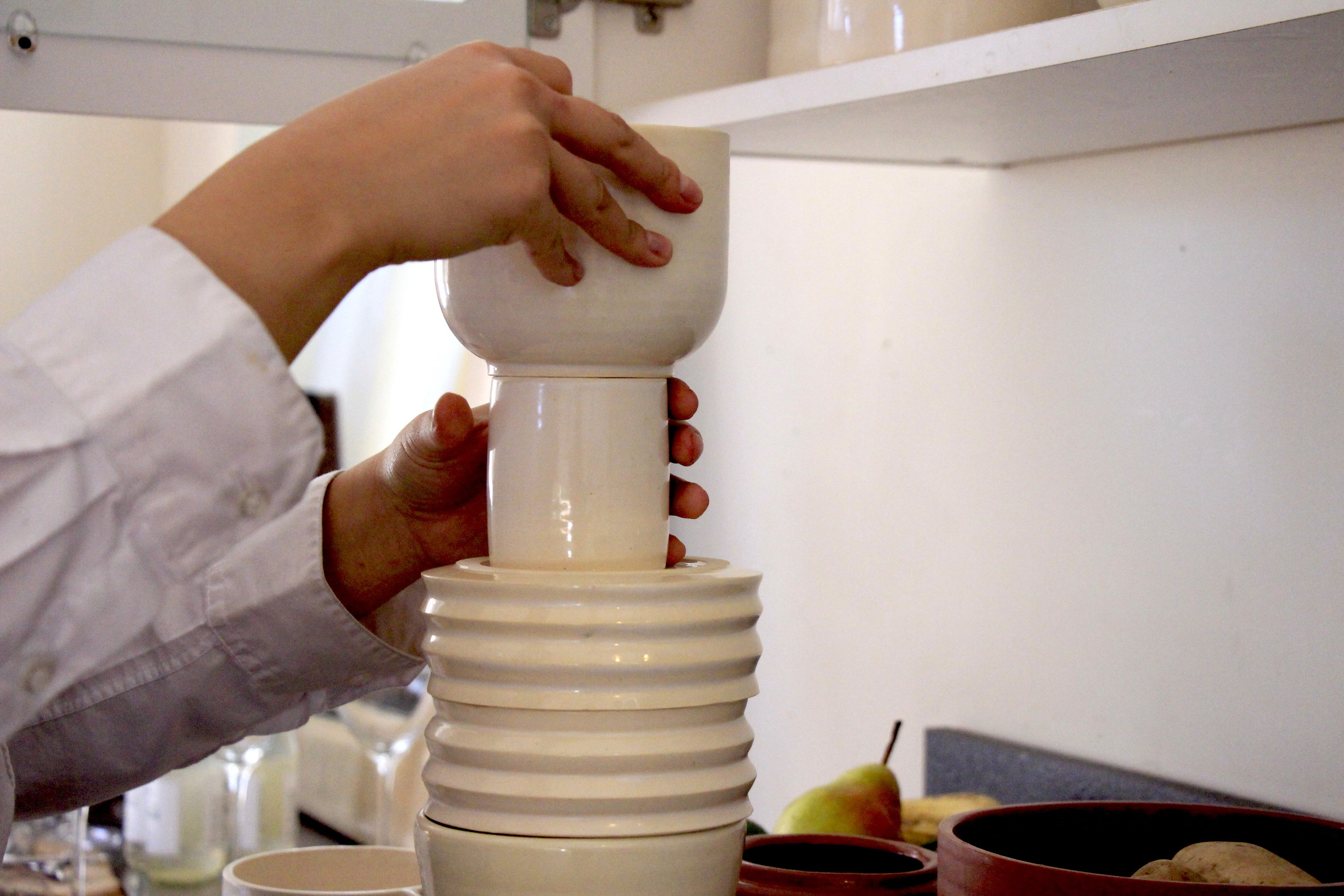
Eny Lee Parker
Who are you?
My name is Eny Lee Parker. I’m from Brazil and I design furniture and sometimes spaces.
What do you make?
I started with interior design and was working in that field for some time. I began working on furniture about two years ago. I’ve been exploring a lot of different materiality, starting with wood and metals. I haven’t gotten into plastic; it’s not something that I am super drawn to. Somewhat recently I found ceramics, which I kind of fell in love with. I felt like I’d found my voice. I’ve been exploring the material for about a year and a half now. It has been really fun, but it has also been challenging.
Why design?
So, in Korean culture, when you are a kid, they lay out these objects in front of you and whatever the you pick is your fate. Normally there will be money and a few other things, one of them being a pencil, which symbolizes education. My mom had this silly dream before I was born - Koreans are very into pregnancy dreams and dream interpretation - that all of these little amino fish were swimming down a stream and she was skipping back and forth when suddenly it started raining colored pencils. Because of her dream, my mom always believed that my object would be a colored pencil and thought that I would be on the artistic side. So my mom was supportive in that way, which was good. Back then it was thought that no one would make money off of art and design.
I also come from a fashion background; my parents used to design and make clothes in Brazil. I went to a lot of portfolio and design schools. In high school I started an intense program after school from 12:00 - 8:00, where I just worked on my portfolio to send to colleges. At that time I was a fine arts student, so I painted and did a lot of illustrations. Then one day I did an illustration of a bathroom in perspective and my professor really liked it. He suggested that I try interior design instead so that I could maybe make a bit of money. So I did. I did it because he told me to, not because I was super into it. And then I studied interior design at SCAD and it wasn’t as if I loved it, but I worked hard during school and I enjoy spaces in general. I think that once I switched into furniture, everything clicked.
What prompted the shift from interior design to furniture?
Interior designers love and appreciate furniture, so the appreciation was always there. But when I was working in residential interior design, we used to have to pick out furniture a lot and I always wished that aspects of the pieces were different in this or that way. I never had confidence that I could actually design things until I came back to Savannah and enrolled in a master's program for furniture.
Describe your workspace.
I’ve always had a studio at the house, but it is mostly just to do small work or assembly and to keep my work in. I also have access to SCAD workshops and all the resources they offer. During breaks my friend started a community workshop called Maven Makers, so I rent space and work there. I also use the City of Savannah Ceramics Department. I feel like the whole city is my studio, which is really nice because I wouldn’t want to work by myself. I love being home, but mornings are usually it. Then I have to get out - I love being able to go somewhere else and work.
Under what conditions do you work best?
I like to clean. Even if I go to the school shop where we all have our own designated areas, I have to clean the space before I start working. I like making a mess, but it has to be my mess; I can’t work in other people’s messes. So my perfect, ideal circumstances start with a having good cup of coffee and some people around me - really just a healthy community environment that is clean.
Do you have any rituals surrounding your practice?
A process book. I always keep my sketchbook with me and I write everything down - I write personal poems about my process. It’s digital, so I keep everything in an InDesign file and literally make a little process book. It helps keep me organized so that if I have to talk about a piece I can go back and remember everything.
Describe your process.
There are all of these different ways to go about it, but one of my favorite ways to design is by thinking about a single little action. So for example, for a project I did with SCAD called SCAD Pad, I knew that I really wanted to design this light for the SCAD Pad that was attached to the ceiling but that you could also take with you wherever you needed. I came to this idea by thinking about the action of a dentist working and moving their light. I have always loved how he or she knows exactly where the light is - it’s very natural. Because the space I was designing for in this instance was small, I designed a linear track on which you could take the light with you from a kitchen to a bed.
But in general, I always start with a topic that I am really interested in whether it is feminism or an art movement. Then I sketch a bunch, make a lot of mood boards, start some model making or prototypes, and after that I make it. I do a lot of work on the computer so everything is always done digitally first - I set dimensions for everything. That’s especially important with furniture. The ceramics don’t always stay accurate, but I have to know generally what height or width I need. It’s so much easier for me to have everything drawn; it’s kind of like having blueprints. You kind of have to. It’s a little different than being in sculpture.
Are there any skills that you acquired from your time at SCAD that still play roles in your process?
Probably process books and asking questions. When I came to college I didn’t fully speak English - I still don’t - but I would have to ask a lot of questions. I would bother my professors a lot and I would ask shop monitors everything - I still do. I think that it has really helped me.
I have to teach myself a lot of things, but I give a lot of credit to everybody that I bother, including people who teach ceramics at SCAD and people from the local community. My friend Claire runs the City of Savannah Cultural Affairs and they have a big ceramics studio that I work at sometimes. She has helped me a lot.
How do your designs strike a balance between aesthetics and function?
It’s a hard topic. One of my favorite things is going to museums whenever I travel. I love not just seeing the sculptures but really looking at the space and the architecture of the museum; I really love how much objects that you put in there stand out. You can put anything on a platform in the middle of the Whitney and it becomes a sculpture, but as soon as you put it in someone’s home it almost decreases the value because it becomes functional. It’s nice to have an interior design background because it makes me more conscious of how a piece will look in a space and how it will stand out. My dream is to one day be able to build my own home and make it into my own museum.
I think that aesthetics are important in design and I think there’s a female desire to make things beautiful, but it’s important to be conscious of human behavior and how it will affect the piece.
Does feminism play a role in your work?
The Honest Chair wasn’t originally about making a feminist statement; it was more about me wanting to make a piece of furniture that embraces you as the user so that you almost feel sensual when you sit in it, but you also feel welcomed because it kind of curves around your body.
The WabiSabi mirror and side table are definitely a lot more conceptual. I’d written an article for Darling Magazine in which I talked a little bit about my view of beauty and what society expects women to be. Nowadays it’s not just that you have to be this beautiful person that looks a certain way, but you also have to be independent, go to the gym, make money, cook - all these different things. I think that it’s really hard to take over all of those responsibilities, and I find that more and more there is this pressure to be independent and strong. That’s really great, but I think there is also beauty in being comfortable with asking for help or leaning on somebody or being open and accepting that you are not completely perfect. So that was kind of what the mirror and side table were really about, because the two pieces can’t function without each other.
I come from a single mother. She’s remarried now but growing up we only had each other. She did it all - she worked, she made a lot of food and she raised me really well. She even went to church and did all of these crazy things, but she would be the first to tell you that there was no way did she did all of that alone. She had such great support from her friends - they even supported me to go to school. It was incredible to see her be vulnerable and simultaneously really strong. I think that a lot of times people don’t think that those things can go together.
How does your work engage with community?
It plays a big role. A lot of my friends have moved the past year, but when I first came back to Savannah I started meeting these women who had their own businesses - like Jessica Duthu who does Strawberry Moth and illustrations for kids, Katie Mattern who does leather work, and Lauren Winter who makes sustainable clothing. We used to meet every Monday night. We did this thing called Growler Monday where we would come together and play board games and talk. I remember a lot of really creative, cool conversations and them sharing their business plans and contracts or talking about social media marketing strategies - they were just being real about the fact that you really don’t make much money during your first five years of having a business. From them I gained all of this information that I wouldn’t have gotten if they didn’t also believe in community - if they were just flat out competitive. I believe that there is room for everybody. I am really not that competitive at all in terms of furniture. I think that everybody has a voice that they can share; the world is huge and somebody is going to listen. Just being in a supportive and collaborative environment inspires and motivates you so much. It makes a huge difference.
What is the role of sustainability in your work?
Sustainability goes beyond ecological and sustainable materiality; it has to do with a lot of other components that sustain more than just yourself, from building a community and using local resources to shipping. It sustains the planet, it sustains the community and it sustains the value of the product.
Right now it’s really hard for me to create something that is entirely sustainable, but it is easy for me to create something that has to do with using local knowledge and local resources. Going forward, I’m excited to explore more about the idea of designing for the future by looking at the past. In past generations, people did such a good job of sourcing materials and trading - they really used what was available to them wherever they were. It wasn’t until the industrial revolution and the discovery of plastic and petroleum that we got greedy. So I would love to explore looking back. I am particularly fascinated with Shaker and wicker furniture, and I love ceramics and wheel throwing. That’s where I think I’m headed, towards being able to use very traditional methods of fabricating to create contemporary furniture.
How has your practice evolved over time?
I had a phase of doing a lot of paintings. I used to be really good at drawing, but I don’t think that I could do that anymore. I had a period of time where I would just wanted to do weird projects. I once worked on a sofa and made a wig for it, then I took a video of my friend Spencer giving it a haircut. I called it Sofie the Sofa. It’s not on my website because it is such an embarrassing project. I got that out of my system. But I think the process is that you kind of have to try it all - Picasso did. He tried everything he really liked. So I believe in that.
I mean it’s hard because the world is telling you to define your voice, your look, your branding, and that’s what people kind of gravitate towards. But I kind of like everything, I want to do it all. So I think that my practice is constantly evolving. And like I said, I have been in this business for very little time. The process is still going.
Is it important for you to be involved in the fabrication of your work or are you more interested in the design process?
I think that both are important. I do think that it’s important for people to have something at home that they know is a human-to-human product rather than machine made. Ideally one day I’d love to be in a position of creating jobs where people are paid fairly or where I’d bring attention to a culture or craft that people don’t pay attention to - crafts that other manufacturers copy and make cheap to the point that people don’t realize how much work it requires to make them. I think that there’s huge importance in giving a customer the sense that somebody created this object, that somebody was paid for its making and that it sustains somebody else’s life. I also hope that my furniture and designs will bring awareness to the way we live. I think that we need to change that in America.
What do you hope that your designs will bring into your customers’ lives?
Everybody wants a story, right? I love the idea of bringing something to my customers that is intimate - almost like a handmade gift.
What’s the story behind your logo?
It’s my initials, EP, but they’re kind of hidden. It’s a square with a circle and a line in between. The E you can see pretty easily and then the P is a little more abstract. The square kind of represents furniture and the circle represents my ceramics.
What is the most challenging part of your process? Where do you find the most ease?
The most challenging part of the process is pricing. I have to go to my husband for that; we have developed a formula for it now. It’s really hard because I’m in the south where people don't really spend one thousand dollars on a table - they would rather get something at Restoration Hardware. So the culture here is a little harder to crack.
Where I am most at ease is probably conceptually. I like being informed and I like to travel often, so it’s really easy to stay inspired.
Is there anyone or anything that inspires you?
Donald Judd. Faye Toogood from England. I love Constantin Brancusi. I am inspired by a lot of sculptors, not necessarily furniture designers.
What’s the best piece of advice you’ve ever received?
Two things come to mind. This is going to sound so silly, but when I worked in interior design and we had to deal a lot with contractors and painters, my boss used to tell me to always be the smartest person in the room. She didn’t mean for me to be on a pedestal. She just meant that if your boss asked you to go to the market and buy oranges, and they didn’t have oranges, you don’t just go back to your boss without oranges. You go back and tell her, “they don’t have oranges but here’s a list of what they do have and how much those things cost.” So she was really saying that you should always be prepared for something to go wrong or for somebody to screw up, and that you have to have all of the details. That really does help, especially in furniture when you’re dealing with all of these different things that you need to put together - you’re working with manufacturers and welders and doing other things yourself.
And then the second one is just the best advice. Well it’s not advice; it’s just the realization that we are in such a social media driven age. We are visual people - I mean designers and artists are visual people. There is a constant struggle of feeling like you’re not making a difference or you’re not doing as well as the other person is doing, and I think that a lot of those feelings come after you’ve been on your computer or you’ve been on your phone. Very rarely do I feel that when I’m with somebody who is doing really well and is genuinely excited about their work. That is contagious; I get excited for them and it helps me too. I’m still going to work hard at being active on social media; I care about those things because there’s a power to marketing, especially free marketing. But to me it’s just going back to the things that matter, which are the immediate people that are around me and my community.
What has design taught you?
I don’t completely know yet. I think that it has taught me that it’s not about product, it’s about people. Ultimately it doesn’t matter if I make the most beautiful product. If I’m not making people question or smile or feel something, or if I’m not being kind, it doesn’t matter because I’m not going to be happy.
How has your practice shaped your hands?
Oftentimes when I’m working with clay there is dirt under my nails and they are short and sometimes unpainted. So I guess I don’t do my nails anymore.
Eny Lee Parker in Savannah, Georgia on January 11, 2017. Photographs by Joey Chu.
